

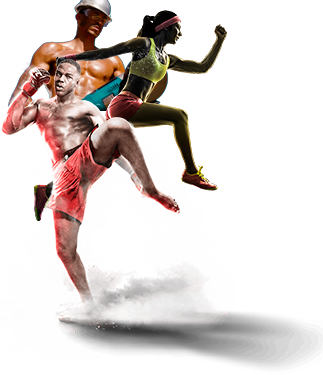
Build muscle that counts -- 'go' muscle rather than 'show' muscle -- and an athletic physique.
Functional muscle is built from real-life activities, like picking up heavy stuff and moving it. It's why construction workers, landscapers, contractors, and many others who work outside for a living are so strong.
Sprinters are also strong, and all they ever do is sprint. But, they are ripped.
The mistake a lot of people make when building muscle is focusing on 'traditional' gym exercises, like machine-based bench press, incline press, lat pulls, biceps preacher curls, smith machine squats, leg curls, leg presses, and overhead triceps extensions with dumbbells. Unfortunately, each of these exercises places undue strain on joints, leads to inflammation, and creates muscle imbalances. Shift your focus away from these exercises and think about simulating hard, intense, real-life activity instead.
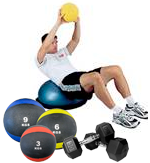
Sure, "gym exercises" have their place, but they should not be a dominant part of your workouts or exercise programs. Use unstable surfaces, alternate between medicine balls, dumbbells, plates, and other animalistic movements for best results and "functional muscle."
So, you might be wondering how to build both strength and an athletic physique?
I've broken it down into five steps to simplify and organize your efforts:
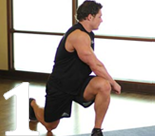


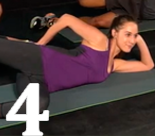

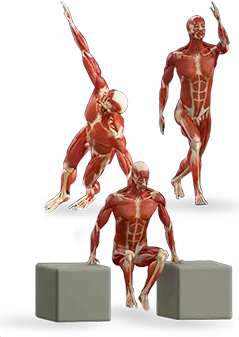
Our bodies move three-dimensionally, meaning we move side-to-side, we move forward-backward, and we turn, or rotate. Most muscle building programs tend to focus on one or two directions of movement (i.e. bench press and squat are both the same direction of movement), and they build body asymmetries over time. Since our bodies are really meant to adapt to real-life demands -- like moving a heavy rock, cutting down a tree, or wrestling something with our bare hands -- moving in one or two directions fails to communicate to our bodies that we are ready to grow.
When it comes to strength training, we need to simulate the real world in a controlled environment. This is when it's great to mix up your routine and flip tires, carry sandbags, use a sledgehammer, battle ropes, or go rock climbing with a weight vest. Since it's difficult to find an environment like this for most people, we simulate real life demands with gym exercises.
You see, the body responds to signals. It knows to grow because the demand has increased, muscles are full of food, and they have the energy to grow. When you push yourself to get stronger and faster, your body learns to improve performance in those categories and responds.
Our goal becomes to move in 3D, ask our lower bodies to move with our upper bodies, and move at various speeds. Here's a 3D giant set to further illustrate this concept:

In this example, you'll see we incorporate high and low positions, upper and lower body, and all three directions of movement before resting. We also take an extended rest for 3 minutes to adequately rest our muscles before attempting to do any exercise again. With 5 sets, we want to be sure you get the most from every rep of every set you do.
If you're unsure you're using your core properly while exercising, a great trick is "phasic shakes," which basically means you're going to fatigue out all phasic muscles, or muscles that turn on/off throughout the day. Your core, by definition, is comprised of tonic muscles, which means these muscles can contract and hold all day long.
To be more clear, a 'phasic' muscle will ramp up a muscle contraction for 2 seconds, sustain it for up to 6 seconds, and then it will ramp down for 2 seconds. If you flex your biceps, as an example, you'll hit peak contraction after 2 seconds, and 6 seconds later, it will start to fade until it's a weak contraction.
'Tonic' muscles, on the other hand, will be able to contract, hold, and continue for as long you need them. Examples of tonic muscles (i.e. your core) include:
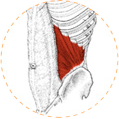
Internal Oblique
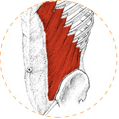
External Oblique
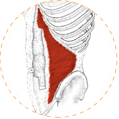
Transversus Abdominus
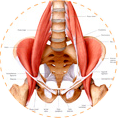
Psoas
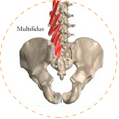
Multifidus
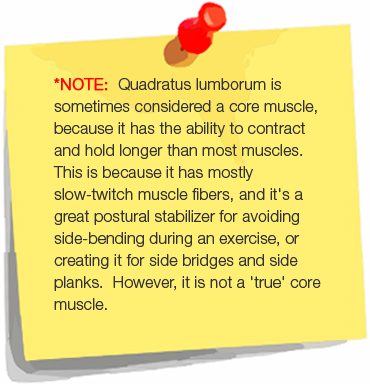
In order to fatigue your 'phasic' muscles, I recommend a standard plank with band; your goal is to isometrically resist internal rotation. Basically, you'll get in a plank on forearm position and wrap a theraband around your wrists/hands. While keeping your elbows under your chest and wrists/hands under your shoulders, attempt to externally rotate your shoulders by adding tension to the band. Without sagging, dropping, or twisting your pelvis, hold this this position for as long as you can. You'll notice your entire body begins to tremble; when you get through these trembles, the only muscles left will be your true core, or your 'tonic' muscles.
Whether you've been having trouble recruiting your true core, due to body fat or previously not understanding which muscles to recruit, this is a powerful and effective way to teach your body in a couple of weeks. I recommend you practice once per day until it takes less than 30 seconds to get past phasic shakes. At that point, you'll have 7 more days of consistently performing this exercise before your body will automatically begin recruiting your core.
As with any movement learning, to truly engrain the movement into your nervous system, it's important you repeat it frequently for a period of 6 weeks after mastering the movement. This creates a 'plastic' change in your nervous system, or a permanent representation of this movement/muscle recruitment pattern.

Interestingly, there's much more to the giant set in Step #1 than meets the eye. The concept of 'Jump' and 'Sprint' is also used. You see, we are emphasizing an explosive 'first' rep of the first exercise to specifically target your ATP-PC system (adenosine triphosphate phosphocarbonate), which gives you extreme amounts of power for up to 2 seconds.
Then, this system tires out and we shift focus to your sprint/anaerobic energy system for up to 60 seconds of exercise. Finally, we top it off with one minute in your 'aerobic' zone, while simultaneously increasing range of motion through mobility-based rotational squats. This method is referred to as Energy System Training.
The next step in building athletic muscle is fixing your hormones. The main hormones to consider when it comes to muscle building are:
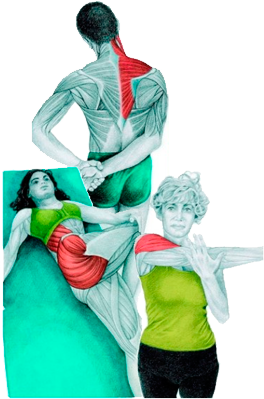
Now, let's talk about stretching to grow. Your myofascial system is an encasement for your body and all of it's organs. It's what gives your body shape or form, and it's the system that limits or allows room for your muscles to grow, stretch, or be more agile. Often times, when a client isn't successful stretching and gaining flexibility, we work out a few knots with a foam roll or tennis ball (or hands-on care), and viola!
Your myofasical system has about 2.5cm of slack in your entire body, and you can release tight areas by removing those knots; thereby increasing the slack in your body. As you increase slack, you increase room for growth. It's distinctly possible a restriction in your rotator cuff is what's limiting your quads or calves from growing, but it's at least as likely restrictions in your lower body are the limiting factor.
Increase room for your muscles to grow, and growth will follow.
Remember it's not only strength that helps you grow, but length, as well. 'Muscle balancing' is about balancing your body right to left, top to bottom, and front to back. Instead of lifting weights in a single plane of movement, consider alternating directions with every exercise, or with every set. Be sure to hit the small muscles after the big muscles, and train from your spine outward. This way, you are hitting all muscle fibers in your body and eliminating the risk of muscle imbalance leading to injury. Plus, when you balance your body, it responds by growing more quickly.
Often times, I'll have a client ask me if they should train harder on their left arm, for example, because it's not as strong as the right; in fact, it's just the opposite: back off on the stronger (right) arm, so you lift equally on both sides. When you cater to symmetry first, your body will grow more quickly, even if it feels slower in the beginning.

The same is true for training big muscles vs small muscles. If you overlook small muscles, like your rotator cuff, hip rotators, or spinal extensors, you'll hit a plateau that will be hard to beat. And, that's if you stay uninjured. The fastest path to results is a balanced body, so always consider this in your muscle program design.
Since bulking can often represent a 5-6 day per week schedule for training, I recommend muscle balancing is built into every workout for a few minutes, and also as a priority on 'off' days. Overall, your program might be scheduled something like this during a strength phase:
Days 1 and 4:
Days 2 and 5:
Days 3 and 6:
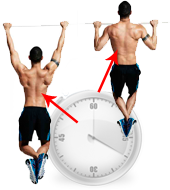
As for 'muscle sequencing,' well, that's about recruiting muscles in the order they were intended. If you've ever attempted to do dips and you have plenty of chest, but limited triceps, you might fatigue out too quickly because you're attempting to do all the work with your triceps instead of your chest. Chest comes first, because it's closer to your spine.
Another easy example to visualize is pull ups; if you've attempted to do all the work with your biceps on a pull up or chin up, you'll notice t's very difficult to do as many reps as you otherwise would. Instead, by first recruiting your shoulder retractors, then lats, then biceps, you'll be able to do many more pull ups. And, therefore, you'll get way better results from this exercise.


This is how nerve signals travel, and it's how you recruit the maximum amount of muscle with an exercise.
PNF, or proprioceptive neuromuscular facilitation, exercises are great for teaching you the proper order to recruit muscles, and allowing there to be a carry-over effect to other exercises. Most people who know PNF only think about it as stretching, but there are resistance-based movements also encompassed in PNF techniques. Here's a brief overview of the different types of PNF exercises:
PNF stretches:
PNF strengthening exercises:
Last, but certainly not least, it's important to consider both 'length' and 'strength' with every muscle. Adequate range of motion is just as important as adequate strength to perform a movement. If you can't squat to the bottom of the range of motion with perfect posture, you're missing out on the last 10% of the movement, which is the most important. The same thing is true with a pull up, as the last 10% is where your real gains arise.
Instead of only stretching and holding a position, consider the following forms of "stretching":

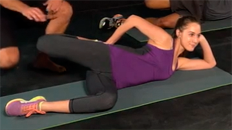
Flexibility
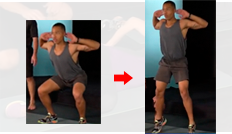
Mobility


Tissue Release
Last, but not least, the final 10% of effort, range of motion, and every set makes all the difference. Think of the first 90% as what you've done before, and the last 10% as the 'new' demand you're placing on your body. If you recall, according to Wolff's Law, your body will respond to any stress or demand placed upon it; this means you need to place progressive and increasing demand on your body to achieve new results over time.

Alternate goals when strength training for best results. I recommend you periodize your strength training program as follows:
...where strength focuses on everything listed above. Agility will focus on speed ladders, quickly changing direction, sports like tennis, suicide sprints, and reaction-time training. Finally, metabolism focuses on multi-joint movements and fat loss exercise program design.
I call this alternation of periodization phases: SAM Training (strength, agility, metabolism)
And it's very straightforward. Alternate your goals, and repeat. This will help properly rest your muscles, maintain/create an athletic physique, and make/keep your body lean.
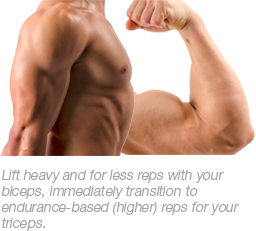
Another great trick -- to make sure you're able to push-through to the last 10% -- is called 'reciprocal inhibition,' which is an active way of resting a muscle while working another. Basically, if you're not weight-bearing, your body will naturally recruit your biceps and turn off your triceps. The same thing is true for your quads and hamstrings, abs and glutes, pecs and lats, etc.
So, lift heavy and for less reps with your biceps, immediately transition to endurance-based (higher) reps for your triceps, and it will turn off the nerve signal to your biceps while you continue to stimulate your metabolism. I often use this technique with clients to keep their heart rates up while resting a targeted muscle group.
It's also a great way to provide 'true' rest to a muscle after an exercise, since often times the signal continues and the muscle continues to feel tense during an entire rest period. If you notice you're having a hard time calming down a muscle, I highly recommend you recruit the equal and opposite for higher reps and lighter weight, utilizing the concept of reciprocal inhibition.
While this information may be a lot to take in, the pattern is simple: rest your body adequately, work your body to complete fatigue, create room for your muscle to grow, always improve your nutritional habits, achieve personal bests in weight-training, and sprint often.
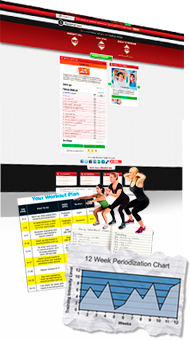
Bulking and shredding comes down to intelligent muscle design. Take the time to plan out today's workout, how that affects tomorrow's workout, and how you'll adjust over a period of the next 18 weeks to adapt to your goals today. It's all about strategy, taking notes on your performance, and directly and specifically targeting your weaknesses to balance out your strengths.
If this is a lot to take in, I would suggest you simply set Create My Workout to 'muscle building', schedule the amount of time you have, and go for it! You'll save A TON of time, and you'll likely see better results while you're learning.
Besides, if you get even half the results of our other clients, you won't be sorry. Go ahead and click 'activate my membership' below and we'll get you started right away: (*results may vary)
